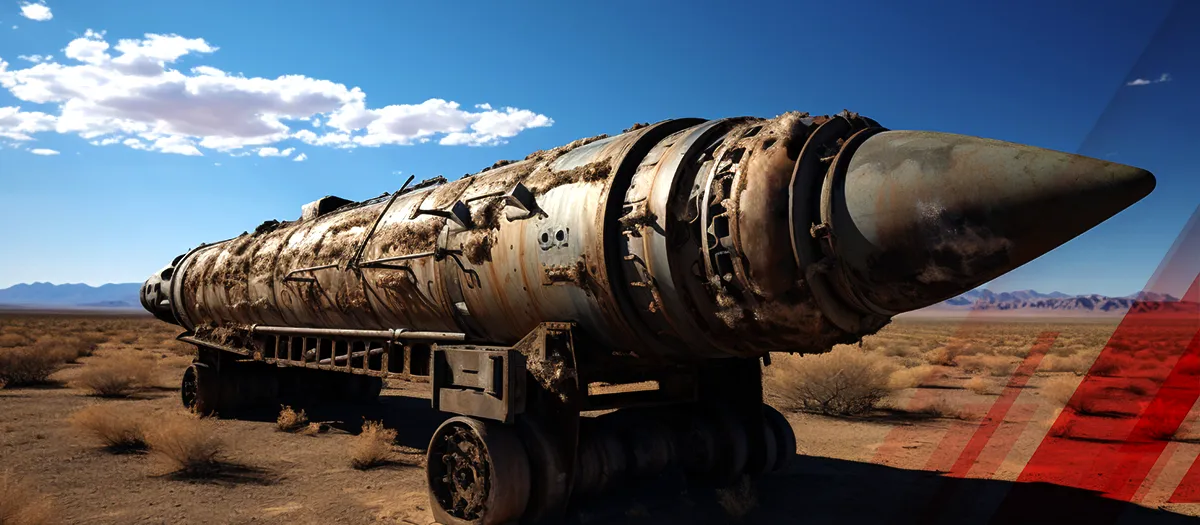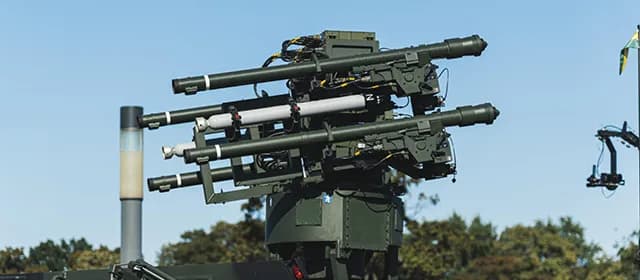What if we could harness the power of energy to create a new era of weaponry? Directed energy weapons (DEWs) are revolutionizing defense technology, offering precise and effective solutions that could change the way we think about warfare.
By focusing energy in concentrated beams, DEWs promise to engage targets with unprecedented accuracy, speed, and minimal collateral damage.
According to Kings Research, the global directed energy weapons market is likely to hit $21,462.7 million by 2031. As these technologies evolve, they hold the potential to reshape military tactics and global security landscapes.
In this blog, we will explore the top 10 companies driving innovation in the market. These companies are advancing the development of laser, microwave, and other directed energy technologies, shaping the future of defense and security systems worldwide.
What are Directed Energy Weapons?
Directed energy weapons (DEWs) engage and destroy enemy assets and threats by using concentrated electromagnetic energy. High-energy lasers and high-power electromagnetic devices, such as millimeter wave and microwave weapons, are included in this category. DEWs can have advantages like transient and reversible effects, in contrast to conventional weapons. They are able to disable or stop electronic systems without destroying them entirely.
Top 10 Companies in Directed Energy Weapons Market
1. Lockheed Martin Corporation
Known for its work on laser weapon systems, Lockheed Martin has been advancing directed energy technologies with projects like the HELIOS system, which was designed for the U.S. Navy to counter drone threats. They are also working on integrating high-energy lasers into air and ground defense platforms.
2. Boeing
Boeing has developed the "CHAMP" (Counter-electronics High Power Microwave Advanced Missile Project), which uses microwave energy to disable electronic systems. This technology shows promise in directed energy for disabling enemy electronic devices without causing physical harm.
3. Rafael Advanced Defense Systems Ltd
Rafael has been a leader in laser-based defense systems. Their Iron Beam laser defense system is capable of intercepting short-range threats such as missiles and drones. They have partnered with Lockheed Martin to enhance their directed energy capabilities.
4. Rheinmetall AG
Rheinmetall's latest innovations include laser weapon systems designed to protect military assets. The company has been integrating directed energy into its advanced defense solutions, particularly for countering drones and artillery.
5. MBDA
MBDA has focused on developing hybrid systems that integrate directed energy with traditional defense capabilities. Their work on laser-guided munitions has shown significant progress in enhancing precision targeting.
6. RTX (Raytheon Technologies)
RTX has made strides with its High Energy Laser (HEL) systems, focusing on using lasers for missile defense and protection against aerial threats. Their systems are integrated into military air, sea, and ground defense.
7. BAE Systems
BAE is involved in developing both high-power microwave and laser systems for defense applications, with a focus on developing flexible and scalable directed energy solutions for various military platforms.
8. Northrop Grumman Corporation
Northrop Grumman has been involved in various directed energy projects, including high-powered lasers for missile defense. Their work on directed energy aims to provide robust countermeasures against advanced threats.
9. Elbit Systems Ltd.
Elbit focuses on integrating directed energy into their UAVs (unmanned aerial vehicles) and other defense systems. They are particularly working on high-powered laser systems for defense against incoming missiles and drones.
10. Honeywell International Inc.
Honeywell has been innovating in the field of directed energy with advanced systems aimed at enhancing protection for military and defense systems. Their directed energy solutions focus on air and space defense.
The Role of Innovation in the Growth of Directed Energy Weapons Companies
Innovation is a key driver of growth for companies in the directed energy weapons (DEW) market. Rapid technological advancements are enabling the development of more sophisticated and efficient DEW systems, giving companies a competitive advantage in a dynamic market.
Additionally, innovation is helping companies tackle challenges effectively. By adopting creative strategies, they can lower development costs and ensure compliance with stringent regulations. This proactive approach enables them to navigate obstacles while capitalizing on emerging opportunities in the DEW sector.
Moreover, innovation is unlocking new avenues for growth. Beyond defense applications, DEWs hold potential in various other industries, and companies are leveraging innovative solutions to explore these possibilities. This diversification not only broadens their offerings but also propels their long-term growth.
Trends in the Directed Energy Weapons Market
The directed energy weapons (DEWs) market has been experiencing significant growth and evolution, driven by advancements in technology and increasing defense budgets worldwide. Below are some key trends shaping this market:
- Growing Defense Investments
Nations are allocating more funds for directed energy weapon programs due to their potential for precision targeting, reduced collateral damage, and cost efficiency over traditional munitions. For instamce, the U.S. Department of Defense and other countries like China and Russia are heavily investing in DEW development for both offensive and defensive purposes.
- Rising Demand for Laser Weapons
Laser-based DEWs are the most developed category, offering high precision and scalability. They are being integrated into platforms like naval ships, fighter jets, and ground vehicles for applications such as anti-drone, anti-missile, and counter-mortar operations. For instance, Lockheed Martin’s High Energy Laser with Integrated Optical-dazzler and Surveillance (HELIOS) is being tested for naval applications.
- Integration with Counter-Unmanned Aerial Systems (C-UAS)
With drones becoming a major threat in modern warfare, DEWs are increasingly used to neutralize UAVs. Their speed, precision, and ability to operate silently make them ideal for counter-drone operations. For instance, Rafael Advanced Defense Systems developed the Drone Dome, a laser-based C-UAS system.
- Focus on Non-Lethal Applications
Governments and law enforcement agencies are exploring non-lethal DEWs for crowd control, border security, and vehicle-stopping systems. Microwave weapons and acoustic weapons are examples of technologies gaining traction in this segment.
- Miniaturization and Platform Integration
Advancements in energy storage and generation are enabling the miniaturization of DEWs, making them easier to deploy on smaller platforms like drones and mobile vehicles. This trend is expected to expand their tactical utility.
- Enhanced Power Sources
The development of compact and high-capacity power sources is crucial for scaling DEWs. Technologies like solid-state batteries and compact nuclear power sources are enabling longer operational cycles for these weapons.
- Shift to Autonomous DEWs
The integration of artificial intelligence (AI) in DEWs is enabling autonomous targeting and operation. AI-driven systems can detect, track, and neutralize threats with minimal human intervention.
- Increased Collaboration and Joint Ventures
Defense contractors are collaborating with governments and research institutions to accelerate R&D. These partnerships help reduce costs and improve the scalability of DEWs. For instance, the UK Ministry of Defence’s collaboration with MBDA and Leonardo on the Dragonfire laser weapon.
- Ethical and Legal Challenges
The deployment of DEWs raises questions about compliance with international laws and humanitarian principles. Governments and organizations are debating frameworks to govern their usage, especially in non-combat scenarios.
These trends indicate a growing reliance on DEWs for modern warfare, emphasizing their role in future military strategies and technological innovations.
Bottom Line
As directed energy weapons continue to evolve, the companies highlighted in this blog are at the forefront of driving advancements in this field. Their cutting-edge technologies promise to revolutionize military operations, providing more efficient, cost-effective, and precise solutions for a wide range of applications. The growth and innovation in the DEW market will be crucial in defining the future of defense systems, with these leading companies playing a pivotal role in its continued development.




